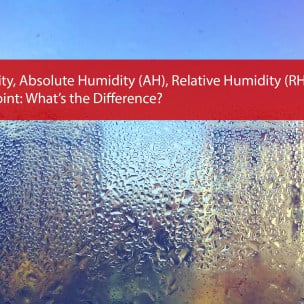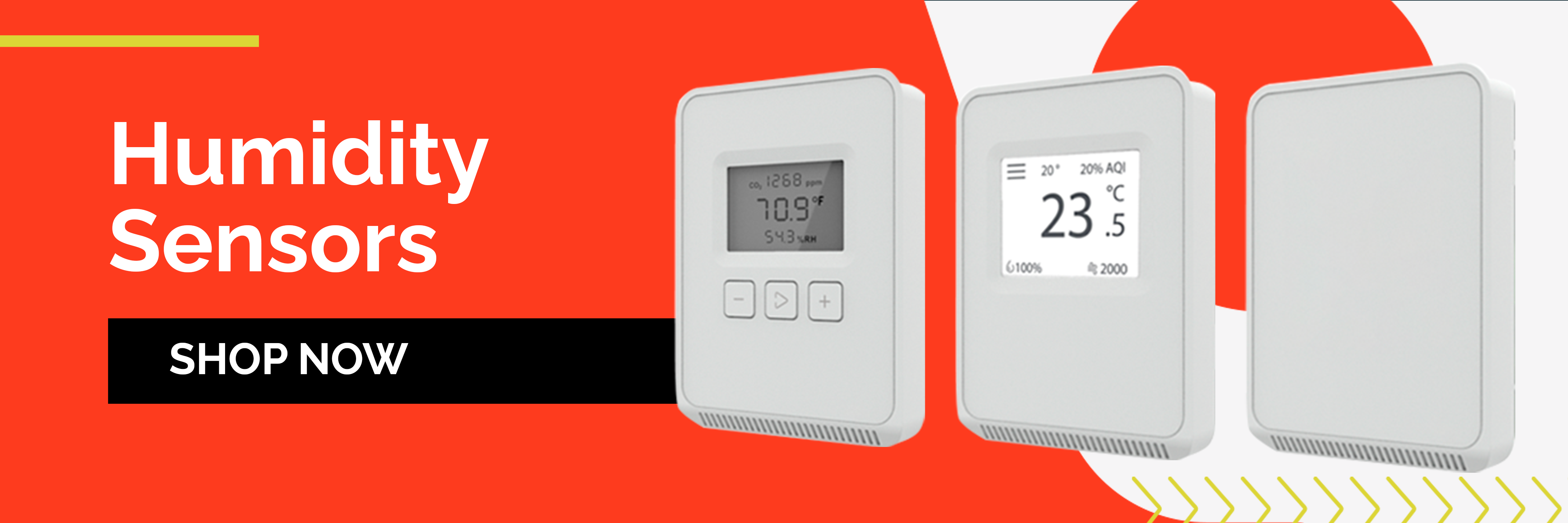How To Measure Humidity

Humidity Sensors
Humidity sensors play a key role in regulating indoor environments. In an office building or hospital, a high humidity can create condensation that can damage equipment, breed mold, and create a conducive environment for pathogen growth. However, a lab environment may require humidity higher than most humans would find comfortable. In Las Vegas casinos, arid, fresh, outside air needs humidity added for indoor spaces. In manufacturing environments, different processes may require different humidity levels.
In some building applications, an outdoor humidity sensor is used to collect data to compare to the indoor environment. Often it is cheaper for a building owner to utilize humid outdoor air, instead of using humidifiers in air handling units (AHUs).
Working in symphony with the Building Management System (BMS), temperature, pressure, and gas sensors, humidity sensing products save end users and building owners money by helping to efficiently and cost effectively maintain healthy indoor environments and manufacturing processes.
Absolute humidity, relative humidity, and dew point are all common ways to measure humidity. Let’s take a moment to define each of these terms.
What is Humidity?
Humidity is the amount of water vapor in the air or some other gas. Humidity can be measured a variety of ways, but it is most often expressed in terms of Absolute Humidity (AH), Relative Humidity (RH), and Dew Point.
What is Absolute Humidity (AH)?
Absolute Humidity is the amount of water vapor present in a unit volume of air at a given temperature. It is a ratio usually expressed in grams per cubic meter (g/m3). Another way to think of it is as the density of the moisture in the air — which is equal to the mass of water vapor divided by the mass of dry air in a volume of air at a given temperature.
What is Relative Humidity (RH)?
Relative Humidity is also a ratio, but it is expressed as a percentage. RH is the AH (moisture content of the air) compared to the highest possible AH (saturated moisture level) at a given temperature and pressure. 0% RH is dry, arid air. 100% RH means that the air is saturated with water vapor and condensation occurs.
What is Dew Point?
Dew Point is the temperature and pressure at which a gas or vapor condenses into a liquid. It is expressed in either Fahrenheit or Celsius degrees. When the dew point is equal to the environment temperature, RH is 100%.
Temperature sensors can be integrated into all of Veris’ humidity sensors. Specifically in Demand Control Ventilation (DCV) / Economizer Control applications, a temperature sensor is used to determine if outdoor air pulled into the building needs to be heated or cooled.
Veris Industries has a complete line of humidity sensors to fulfill your building automation sensing needs. Visit our website or call our sales team at 1-800-354-8556 or +1 503.598.4564 for more details.





